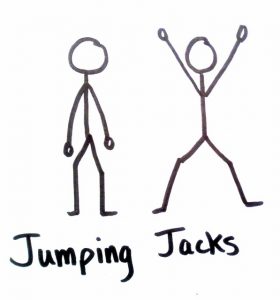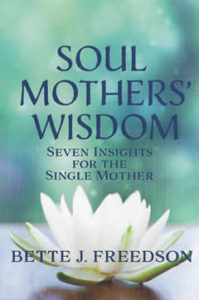With Bette J. Freedson
On a typically freezing February day in Southern Maine when icicles hang like gargoyles over the windows, frozen in place, destined never to move, even a short walk from the house to my office in the renovated barn, causes a damp chilliness to seep into my bones. My body, eager to ease from the stifling, stiffening cold into the felt sense of warmth from a thousand therapy sessions, was beginning to thaw when Carmen arrived. As it turned out, Carmen’s chill was destined to be a different story.
“I’m numb!” She announced.
Carmen’s tone reflected her movements as she stiffly settled onto the couch. Typically animated even when depressed, Carmen’s expression today was blank, her eyes stared into space. I was curious, yet it came as no surprise that soma and soul were intricately and intimately involved.
“What’s going on?” I asked.
“Well, you know I’m facing my biggest fear, the one I’ve avoided for years. Not having Ben in my life makes me feel like I’m no one. I’ve been scared before, but this is different. I don’t feel alive.”
A talented occupational therapist working with forensic and dually diagnosed clients, Carmen has always found work satisfying; relationships have been another matter. After years of romantic fighting and fleeing, Carmen was now determined to sever connections with a charismatic and manipulative man. Finally facing fears that had simmered subversively under her ambivalence, Carmen was immersed in the vulnerability that had kept her going to and from an abusive attachment.
For the last few months Carmen had been acutely depressed. Although continuing to reassure me she would not kill herself, Carmen seemed to be considering suicide as if it were a long-range financial plan, something she might consider in a couple years after taking plenty of time to put affairs in order.
While this supposed long-term goal allayed my immediate concerns, it provided little actual comfort for myself or for Carmen. With fight and flight no longer options, and flow being too frightening, emotional freeze seemed the best plan.
Fortunately for us both Carmen was still cognitively available.
While she could grasp that facing her pain could be her strength, Carmen’s body was blocking the feelings. Given the innate intelligence of the soma and given Carmen’s statements regarding potential bodily harm, this was perhaps a protective choice—and possibly an entry into the healing of integration.
“Carmen, have you felt numb other times?”
 “Never before like this. It’s been coming on for a few days from my neck down, but today I can’t feel anything.”
“Never before like this. It’s been coming on for a few days from my neck down, but today I can’t feel anything.”
“Is there a time when you have not felt numb?”
“I feel scared and numb during open time. At work I’m okay. I don’t want to feel this way. I do want to live. I want to love again. I know it starts with loving myself, but I don’t know how anymore. Maybe I never did.”
At this point two things came to mind. I recalled Jeff Zeig talking about Carl Whitaker, the famed family therapist who used intuition therapeutically, and I also thought about Amy Cuddy’s work around posture and power.
“Carmen, I have a hunch. I think your body is protecting you from pain, but the numbness may disconnect you from your power.”
“I don’t think I have any power.”
“I may see it a little differently. I’d like to hear more about how you feel at work.”
“Oh, at work I snap right into the day and enjoy working with the patients and my supervisees.”
“Carmen, the body is wise. Besides protection from pain, it may hold the key to your aliveness, to your power. It seems that that when you snap into work, you are empowered, to function, to feel; your life force is available. So, I’m wondering, would you be willing to come off the couch and take a posture that represents ‘snapping in’? You might imagine the felt sense of the snap moment, and allow the posture to emerge.”
Silent and still stiff, Carmen got up and moved near the door of my small office. Putting her hands over her head and placing her legs apart as if standing at the equator, she said, “It looks like this, like a jumping jack.”
“Great.” I stood and faced her in the same general position. Then I got what Whitaker referred to as a “baby thought,” an intuition.
 Carmen had been brought up as a military kid, going from school to school with little support for transitions. Suffering and compliant, Carmen made her way through the losses, loneliness and stress unnoticed and unattended. Sadly, Carmen’s strengths had also gone un-mirrored by her stressed-out parents and oblivious teachers.
Carmen had been brought up as a military kid, going from school to school with little support for transitions. Suffering and compliant, Carmen made her way through the losses, loneliness and stress unnoticed and unattended. Sadly, Carmen’s strengths had also gone un-mirrored by her stressed-out parents and oblivious teachers.
“My office is small. Would you be willing for us to go into the little dojo where my husband teaches Tai Chi. There are some mirrors there and we could do jumping jacks together and watch ourselves. Would that be okay? ”
Slightly smiling and nodding, Carmen followed me across the hall. For a moment, we looked at ourselves then we began to jump. I don’t know who jumped first, but we were synchronized. And we jumped. We giggled. And we jumped.
Finally, flushed and a bit breathless, Carmen said, “That’s good.”
Back in the office, Carmen was once again her animated self.
“Well, that’s an interesting way to do therapy,” she said.
“I guess in a way it’s a little the OT work that you do. You know, getting people moving?”
With a broadening smile and a softening posture, Carmen replied, “I think you’re right. I feel better.”
“That’s fantastic, Carmen. Numbness and aliveness are parts of the human experience. Perhaps if you feel numb again, you might just imagine jumping. Whether you snap in or jump into aliveness, either way you can move into a felt sense of your power to be okay, to be you.”
Carmen left the session rosy cheeked. I emerged with renewed respect for the integrative wisdom of soma and soul. Like the blanket of snow covering the blooming-to-come, Carmen’s freeze had provided its own shelter. Her soul, fearing a mortal wound to its spirit, had sent an SOS to her body. In its wisdom, Carmen’s body had provided a short season of protection in preparation for new life and a new season of exquisite growth.
Bette J. Freedson, LCSW is a clinical social worker, certified group psychotherapist, and the author of Soul Mothers’ Wisdom: Seven Insights for the Single Mother. Bette’s specialties include stress management, parenting issues, recovery from trauma and the development of intuitive insight. She maintains a private practice in southern Maine with her husband, Ray Amidon, LMFT.
Photo Credits:
We offer many thanks to Pixaby, Pexels, and Unsplash for offering free pictures through the Creative Commons License
The frozen ice woman was retrieved from http://www.pxleyes.com/photoshop-picture/4cec3bec66b02/Frozen.html











